The perfect Jacobean banqueting houses of Chipping Campden are one of the gems of the English landscape. Glorious ornamented stone pavilions rise from a level terrace of swaying grass and grazing sheep in the Cotswold countryside. They are as elegant and uplifting a sight as you could hope to see. Coach loads of visiting tourists peer over the precinct wall for a glimpse of their timeless loveliness. Yet these solitary stone sentinels are, like the landscape itself, not unchanged survivals, but orphans of the most eventful decade and a half in all English history. In the space between them stands a tiny scorched remnant of what once was: the magnificent Jacobean mansion of Campden House. On a Saturday evening in May 1645, in the midst of the civil war, Charles I rode over Broadway Hill and the night sky was lit up by the leaping flames that consumed it. The torch had been touched to its timbers not by parliamentarians, but by a retreating royalist garrison, determined to prevent their enemies from making this strategic spot their own.
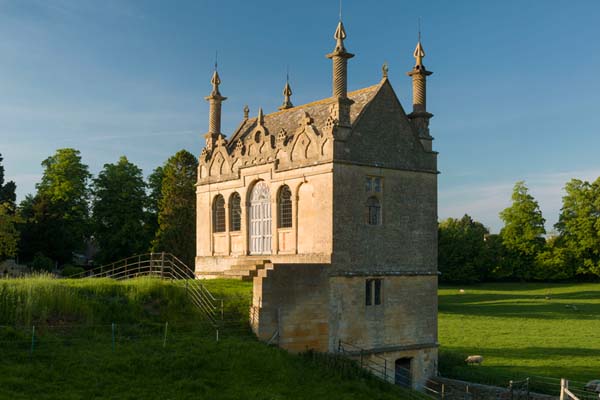 The East Banqueting House at Chipping Campden, Oxfordshire.
The East Banqueting House at Chipping Campden, Oxfordshire.
The destruction of the years of the English civil war was immense. Over 130,000 died and tens of thousands were made homeless. Almost 200 country houses were destroyed and over 150 towns were extensively damaged. Royalists and parliamentarians alike wrought destruction. Some towns and cities were hammered by actual fighting, Colchester and Pontefract among them. Others saw wholesale demolition in anticipation of attack. Churches were targeted by Puritans, inside and out, their monuments and fittings considered abominably ‘Papist’. Stained glass was smashed, altars torn down and cathedral spires, such as that at Lichfield, bombarded with artillery.
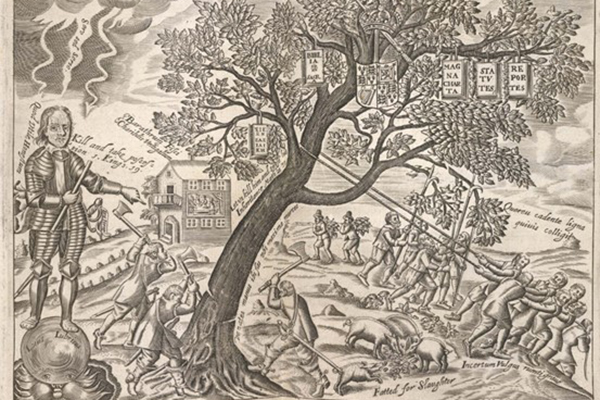 Felling the royal oak of Britain, 1649. As well as felling the metaphorical trees of monarchy, the Commonwealth period saw the felling of hundreds of thousands of ancient trees.
Felling the royal oak of Britain, 1649. As well as felling the metaphorical trees of monarchy, the Commonwealth period saw the felling of hundreds of thousands of ancient trees.
But the destruction was not simply the collateral damage of war. The fighting in England had largely ceased by 1648 and yet many of the greatest changes were still to come. Like the royalists leaving Campden House, the victorious Parliamentarians were on high alert lest the strategic strongholds of England be held against them by resurgent enemies. There followed a slew of orders for the great castles of the nation to be rendered ‘useless’. Site by site the glories of medieval England were brought thundering to the ground, the walls of Norman keeps detonated, defences incapacitated. Sieges and this deliberate ‘sleighting’ left dozens of castles in ruins, Kenilworth Castle in Warwickshire, Corfe Castle in Dorset, Scarborough Castle in Yorkshire, Raglan Castle in Monmouthshire and many more besides. As the Reformation had reduced the monasteries of the nation to roofless ruination, so the republic clawed down its castles.
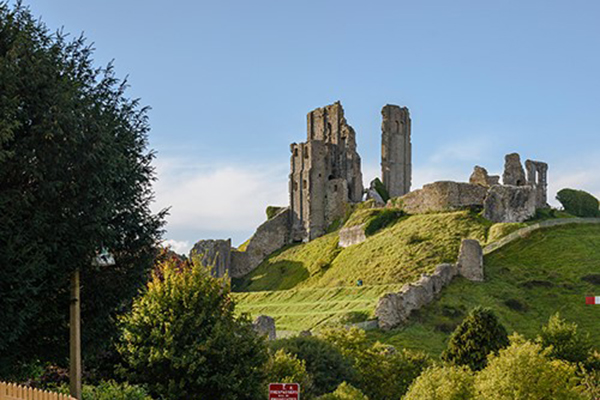 The ruins of Corfe Castle, the Bankes family seat destroyed in the civil war.
The ruins of Corfe Castle, the Bankes family seat destroyed in the civil war.
Practical rather than ideological motives lay behind much of the change. After almost a decade of war the nation was in dire financial straits. Soldiers’ pay was in deep arrears and the Treasury coffers were empty. The republican regime, fresh from executing the king, turned to the assets at its disposal. The estates and property of the abolished monarchy, the lands of bishops and archbishops – also abolished – and the confiscated property of royalists were all sources of money that might pay soldiers’ wages and fund the defence of the new republic. The crown jewels and the contents of the royal palaces were put up for sale, while William Webb, Surveyor General, was given the epic task of managing the sale of the royal estates. Over 1,000 surviving volumes catalogue the royal and episcopal lands to be sold, only a handful were to be retained for the use of the republic, while timber was to be felled and hauled to the coast for ship-building.
At Kenilworth Castle, for instance, the results were seismic. Following the council of state’s order for the castle to be ‘destroyed’, the north wall of the Norman keep was blown up in 1649, and shortly afterwards Webb’s men arrived with their measuring chains. The castle, its immense mere and park, where Elizabeth I had hunted at the side of the Earl of Leicester, were assessed. The estate was then made over to Colonel Joseph Hawkesworth and his men in lieu of pay. The total transformation of the medieval landscape followed. The mere, on which Henry V had sailed pleasure boats, was drained, thousands of ‘ancient’ oaks were felled, and the denuded hunting grounds parcelled up for agriculture. In the words of one observer, the owners ‘cut down the King’s wood, destroy his Park & Chase, and divide the lands into farms amongst themselves’. The experience was similar elsewhere. Some forests disappeared altogether. Over 40,000 trees were felled in the Forest of Dean by order of the House of Commons, so that by 1660 fewer than 30,000 remained. The New Forest had had around 124,000 trees in 1608, a century later it was reckoned to have barely 12,500.
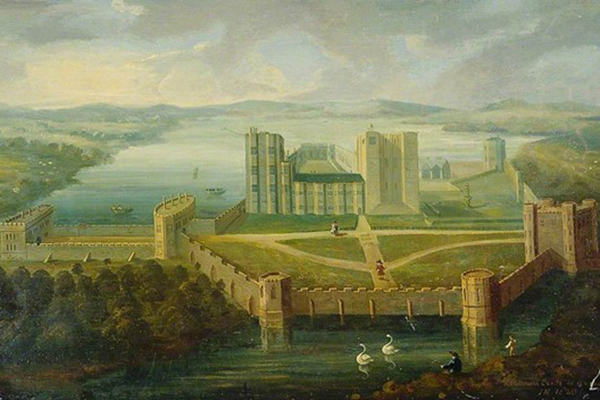 Kenilworth Castle one of the most magnificent English medieval castles. By 1660 the keep had been blown up, the mere drained and the hunting park broken up into plots and allocated to parliamentary soldiers.
Kenilworth Castle one of the most magnificent English medieval castles. By 1660 the keep had been blown up, the mere drained and the hunting park broken up into plots and allocated to parliamentary soldiers.
When the Restoration came the changes of the past two decades were too many to be undone. Some castles were reinhabited. Windsor, for instance, was rebuilt by Charles II, its ancient hunting grounds remodelled and a new-three mile elm avenue planted. But many were abandoned. Work was already underway building to a new pattern.
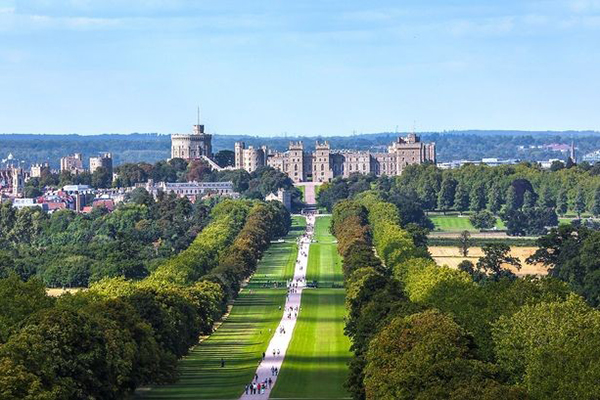 Windsor Castle, with the long walk laid out by Charles II, as part of the repair and reconstruction of the castle and park after the ravaging effects of the civil war.
Windsor Castle, with the long walk laid out by Charles II, as part of the repair and reconstruction of the castle and park after the ravaging effects of the civil war.
The Bankes family would not attempt to restore Corfe Castle, but set about constructing a baroque house at Kingston Lacey. The Marquesses of Worcester left Raglan to create a new seat at Badminton, the Earls of Huntingdon left Ashby de la Zouche for Donington Park. The landscapes too had changed for good. At the outbreak of civil war there had been more country house deer parks than ever before. Staffordshire alone had almost 80 with at least 50 stocked with deer. But the sales and losses, the demand for timber for shipbuilding and industry, and the pressure for economic returns meant many would never recover.
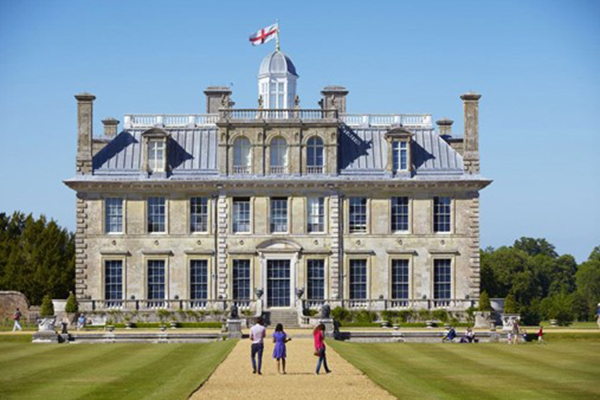 Kingston Lacey House, built by the Bankes family in the 1660s to replace Corfe Castle.
Kingston Lacey House, built by the Bankes family in the 1660s to replace Corfe Castle.
By the end of the century fox hunting over open ground, rather than deer hunting in enclosed parks was the new vogue. Engravings and paintings celebrating the ivy-sprouting ruins of sleighted castles had become popular, and hunting stands and meres – built as staging for stag hunts – had been supplanted by avenues and long waters. The monarchy may have been restored in 1660, but the Middle Ages were finally over.
Anna Keay’s new book The Restless Republic: Britain without a Crown is published by William Collins.